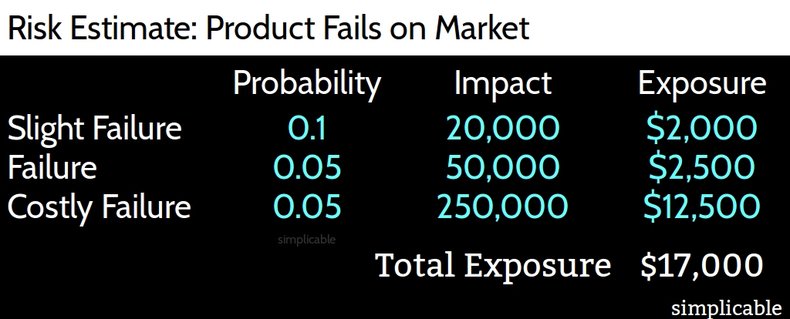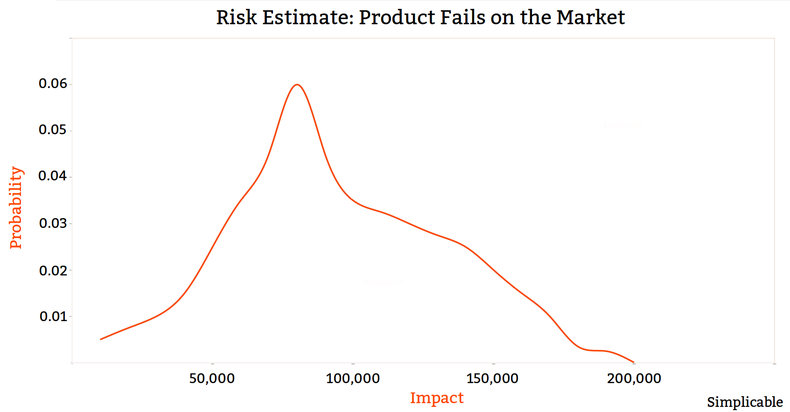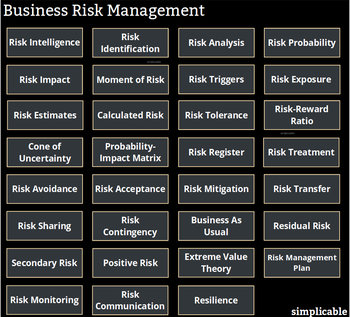
Basic
A single estimate of probability and impact based on historical comparisons and/or the opinions of subject matter experts. For example, a product development team estimates the risk that a product will fail on the market as a 20% chance of a $100,000 loss.Risk Exposure = 0.2 x 100,000 = $20,000The risk exposure calculation is an estimate of the probable cost of a risk. It isn't an upper bound on risk.Probability-Impact Matrix
A single estimate of probability and impact is often overly simplistic as there may be many levels of potential impact, each with a separate probability of occurring. A more accurate risk estimate can often be obtained with a matrix of probabilities and impacts.
Probability Distribution
A more detailed risk estimate can be represented with a smooth curve that gives you a probability for every possible impact.
Parametric Estimates
Risk estimates that go beyond the educated guesses of subject matter experts to calculate risk probabilities and impacts using formulas or algorithms based on a number of parameters. Such calculations are industry and risk specific.Reference Class Forecasting
Developing or validating risk estimates using data about historical losses that occurred with comparable strategies, operations or projects. For example, risk estimates for an infrastructure project based on a database of historical infrastructure projects of similar magnitude. If projects in your industry have a 20% failure rate and your risk estimate is 3%, you might be missing something.| Overview: Risk Estimates | ||
Type | ||
Definition | Forecasts of the probability and impact of risks. | |
Related Concepts | ||




























